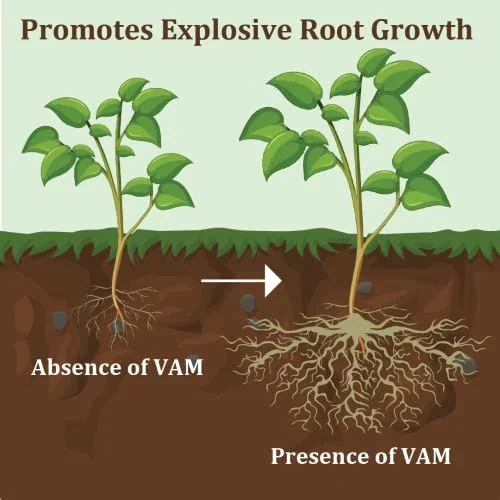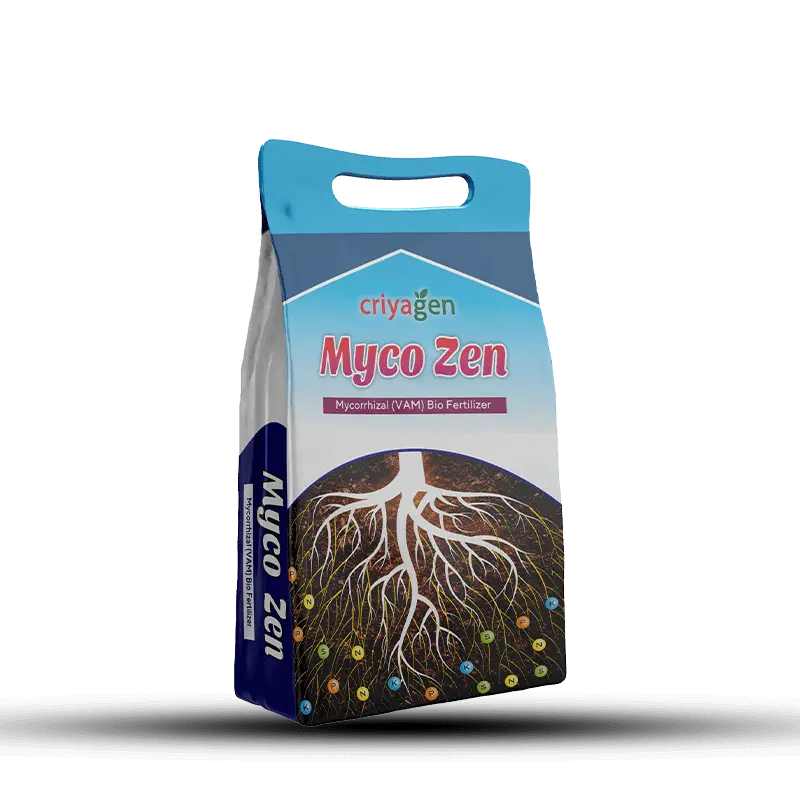Are you noticing young leaves turning dark green with purplish veins, especially on the underside? Do older leaves have a purplish tint overall and experience tip dieback? Then, it would help if you considered phosphorus deficiency.

Did you know? Though Phosphorus is the second macronutrient required in relatively large amounts by plants, next to nitrogen, it is one of the most difficult nutrients for plants to acquire because of its low solubility, low mobility, and fixation in soil.
Why do plants require Phosphorus?
Soil phosphorus enhances shoot and root growth and promotes early maturity, which increases water use efficiency (WUE) and yield potential because it helps store and transfer energy produced by photosynthesis.
But when you see a deficiency of Phosphorus, you blindly go to the application of chemical fertilisers to the soil, but before that, you need to know this,
According to the Impact Study of Soil Health Card Scheme conducted by MANAGE, Hyderabad, India consumes chemical fertiliser Phosphorus about (6 million tonnes).
Chemical fertilisers are more resistant to the environment, reduce soil fertility, and cause a lot of soil and land degradation. The use of chemical fertilisers reduces soil microorganisms and causes groundwater pollution.
What Happens When We Give Excessive Phosphorus?
Excessive chemical phosphorous fertilisers in the soil affect the quality of surface water and groundwater through runoff and infiltration, respectively, and cause soil compaction, thereby reducing crop production.
To overcome this problem, we have another method: microorganisms can provide Phosphorus to your plants organically. But how? Let’s see what those microorganisms are.
Microorganisms are vital to crop production by improving soil properties and plant nutrition. VAM (Vesicular-Arbuscular Mycorrhizae) is a beneficial fungus that plays a crucial role in soil nutrient dynamics and improves soil’s physical, chemical, and biological properties.
What is VAM?
VAM stands for Vesicular–Arbuscular Mycorrhiza, a symbiotic association between phycomycetes fungi and roots.
Then what is mycorrhiza? Mycorrhiza is a mutualistic symbiosis between plant and fungus localised in a root or root-like structure in which energy moves primarily from plant to fungus and inorganic resources move from fungus to plant.
What is the role of VAM in Phosphorus deficiency?
VAM is a fungus that penetrates the roots of a vascular plant, supporting the capture of nutrients, mainly Phosphorus, from the soil, thus increasing soil fertility. VAM also aids in drought tolerance.

The action of VAM
VAM accumulates phosphate through its vesicles and arbuscules and can travel far from the plant roots in search of phosphate resources. It penetrates the plant root cells, producing balloon-like vesicles.

The benefits of VAM
The main benefits of vesicular-arbuscular mycorrhizal (VAM) involvement include increased nutrient uptake, especially Phosphorus, and transport to the host plant. VAM fungi can also increase plant resistance to root pathogens. VAM is a single cell that supplies Phosphorus and micronutrients such as Co, Mb, Cu, Fe, and Zn to the plant.
One research showed that VAM was found to directly increase the uptake of P, Zn, Cu, and Fe in field beans. In one experiment, VAM fungi significantly reduced damping-off disease in soybeans.
So what are you thinking? I recommend Criyagen Myco Zen for your plants, not only for Phosphorus but also for reducing diseases.
What is Criyagen Myco-Zen?
Myco Zen (vesicular Arbuscular Mycorrhiza) is a soil inoculant bio fertiliser that enhances plant root growth and development and aids in mobilising and uptake of phosphate in various crops.

How to Use Myco Zen For Phosphorus Deficiency?
We can opt for soil application, where you mix 4-5 kg/acre of Myco Zen in 100 kg of well-decomposed compost and apply it to the soil uniformly.
Lastly, fertiliser phosphate is becoming one of the most expensive commodities, and its availability is still being determined. Excessive use of the chemical Phosphorus alters soil fertility. Mycorrhizal plant colonisation helps conserve energy by reducing crops’ fertiliser requirements and meeting production targets in nutritionally deficient soils. This Criyagen Myco Zen increases phosphorus uptake, drought tolerance, and plant growth benefits through mycorrhizal colonisation, which is essential to increase the absorption of other relatively immobile elements in soil and is a step towards the sustainability of healthy soil and plant ecosystems.